A lot of blood has been shed here, in this house that Vespasian built. Too bad he never got to see the end product. It was completed a year after his death, in A.D. 80.
Titus, Vespasian’s son, welcomed the completed arena in style and held games that lasted 100 days and nights. During the time, 5,000 animals were slaughtered. Turned out, that was only a warm-up as the next emperor, Trajan, killed 9,000 gladiators and 10,000 animals in 117 days.
Emperors continued to stage free games for the public here. The spectacles were a way for the ruler to display his power and to increase his popularity ratings. A typical game would open with comical acts and exotic animal displays and end with fights to the death, between animals and gladiators or among gladiators. Generally, the fighters were slaves, war prisoners or condemned criminals. Sometimes free Romans took part, as a successful gladiator could eventually make decent money.
The elliptical amphitheater could accommodate 55,000 spectators, who entered the building through 80 entrances and efficiently dispersed throughout the many corridors below. The prominent figures such as m magistrates and senior officials would sit in the lower level, the wealthy citizens sat in the middle and the women and lower class sat at the very top. The podium was reserved for emperors and senators.
Also below the floor were cages for wild animals and sets for the various battles. Trapdoors in the floor would open and the cages were hoisted up, enabling the animals to appear in the middle of the arena and thrill the crowd.
The outer walls have three levels of arches, articulated by Ionic, Doric and Corinthian columns. They were originally covered in travertine and adorned with marble statues. After the Colosseum was abandoned in the 6th century, after the fall of the Roman empire, the valuable material was removed and used in other monuments, including St. Peter’s Basilica and various palazzos around town.
The southern side of the Colosseum was felled by an earthquake in 847.
The site upon which the Colosseum was built was part of Nero’s palatial complex, the Domus Aurea. Nero, the original playboy, had built an opulent spread in which to live and host decadent parties. In addition to pastures and woods, the estate held a man-made lake. The Colosseum was built over the drained lake.
The arena was named the Colosseum after the enormous statue of Nero, Colosso di Nerone, that stood nearby.
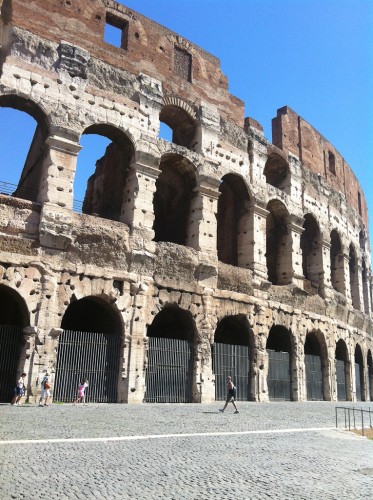
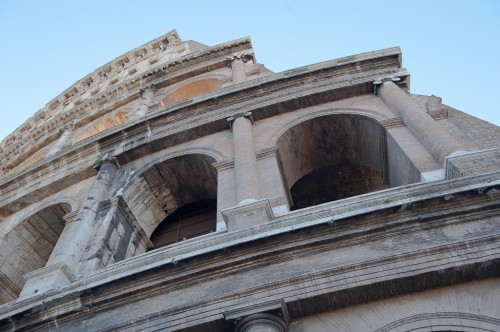
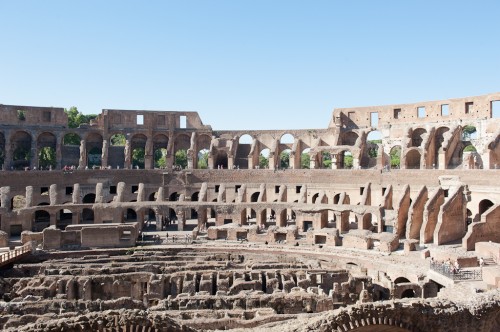
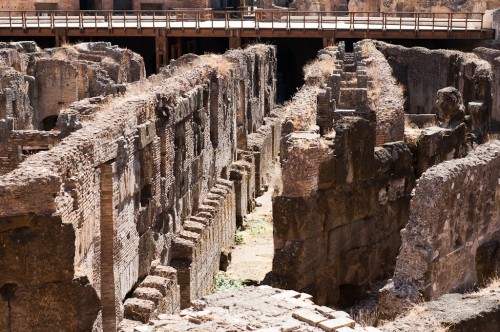
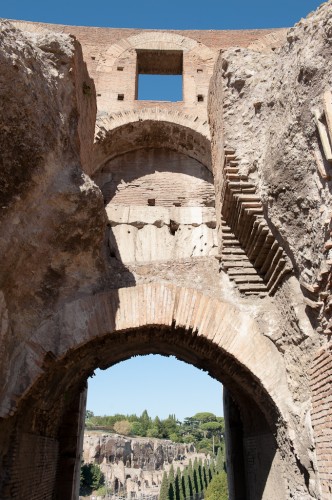
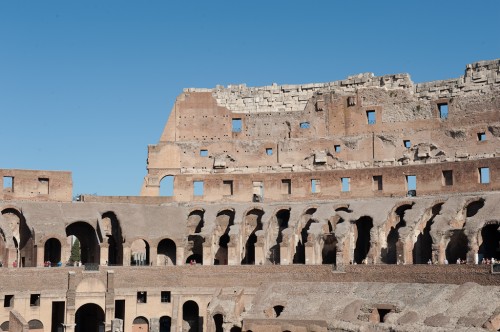
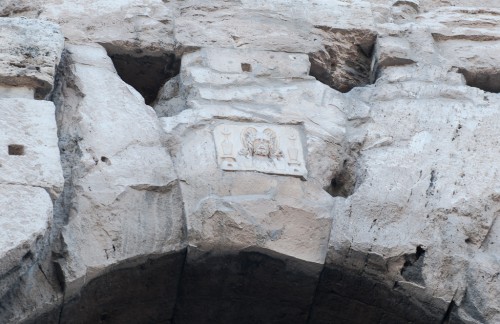
No comments yet.